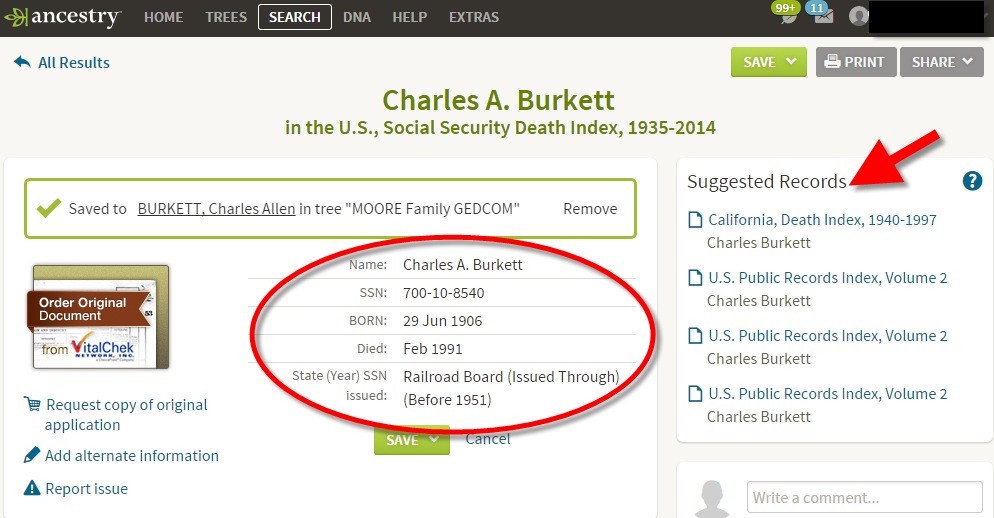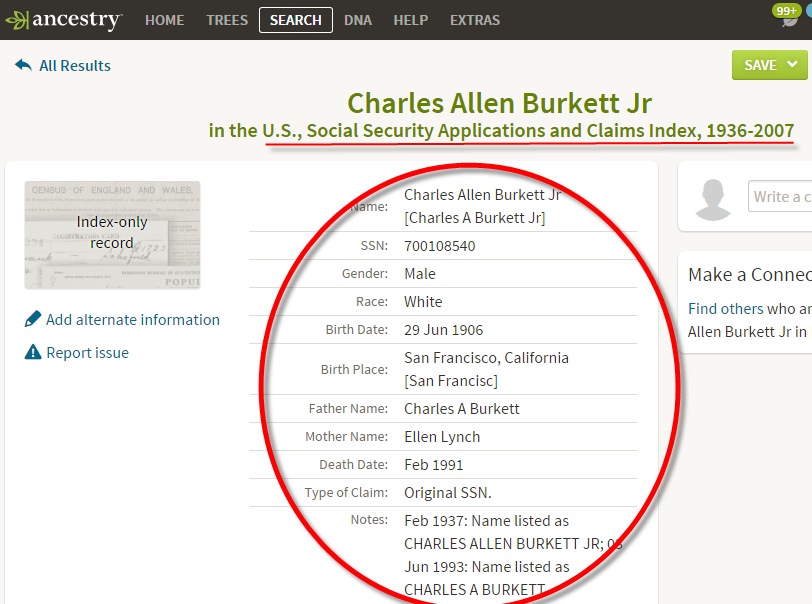by Lisa Cooke | Jul 25, 2015 | 01 What's New, Beginner, Heritage Scrapbooking, images, Memory Lane, Oral History, Photographs, Writing Family History
Most of us don’t recall our early years well. How can we tell our life’s story if we don’t remember the first chapter?
I’ve learned to use whatever scraps the past gives me. That’s what I did in a scrapbook I put together a few years ago that reconstructs my early childhood. I realized when looking through this album that I actually cobbled together the past from four different sources, only one of which was my own memory:
 1. The family slide collection. I grew up in the 1970s, when slide photography was all the rage (at least with my dad). Several years ago, I scanned all the slides. My digital copies of the slides became the main narrative for the album.
1. The family slide collection. I grew up in the 1970s, when slide photography was all the rage (at least with my dad). Several years ago, I scanned all the slides. My digital copies of the slides became the main narrative for the album.
2. My parents’ memories, captured in an oral history interview. One day, I got both my parents on the phone at the same time. I asked them to look through their CD of the family slides as I looked through my copy. As we looked at each picture–even the not-so-great ones–I asked what memories surfaced. Different things came to mind for each of them, which was fantastic. They captioned the photos for me, filling in the stories behind the pictures.
 3. My baby book. My parents already had my 11-month old brother by the time I came along. So Mom didn’t have a lot of time to write much down. But there are a few gems in my baby book: my mom’s memories and memorabilia from when I was born. These filled in more gaps in my childhood story.
3. My baby book. My parents already had my 11-month old brother by the time I came along. So Mom didn’t have a lot of time to write much down. But there are a few gems in my baby book: my mom’s memories and memorabilia from when I was born. These filled in more gaps in my childhood story.
 4. My own vague childhood memories. All these pictures and memories jogged loose fragments of my own memories. They are still fragmented; some don’t make much sense or tell a whole story. But taken together with everything else, they help reconstruct my childhood enough that I have a much better sense of it now.
4. My own vague childhood memories. All these pictures and memories jogged loose fragments of my own memories. They are still fragmented; some don’t make much sense or tell a whole story. But taken together with everything else, they help reconstruct my childhood enough that I have a much better sense of it now.
The family historian in me made sure I identified the source of each story in the album. My parents’ memories are tagged as such, as are excerpts from my baby book. I typed up my own memories and put them in my own voice.
Who is living who knows something about your childhood? Parents? Step-parents? Grandparents? Aunts or uncles? Friends of the family? What family artifacts or albums may be in the attic, basement or on a shelf? Ask them to help give you back your own past!
Resources:
Family History for Kids Starts WITH the Kids
 Our free Family History Made Easy podcast offers great episodes on topics related to this post: Lisa covers finding family history at home; interviewing skills, and how to contact long-lost relatives (episodes 13 and 14).
Our free Family History Made Easy podcast offers great episodes on topics related to this post: Lisa covers finding family history at home; interviewing skills, and how to contact long-lost relatives (episodes 13 and 14).
Genealogy Gems Premium members can listen to Premium podcast episode 116, which has an interview with Laura Hedgecock, author of Memories of Me: A Complete Guide to Telling and Sharing the Stories of Your Life. (Click here to learn more about Premium membership.)
by Lisa Cooke | Jul 23, 2015 | 01 What's New, Ancestry, Records & databases
Do your fellow genealogists a favor and share this important post!
Ancestry Publishes U.S., Social Security Applications and Claims Index, 1936-2007
The new U.S. Social Security Applications and Claims Index 1936 – 2007 is a critical update to our ability to access information in U.S. Social Security applications, and perfect companion to the SSDI.
“This database picks up where the Social Security Death Index (SSDI) leaves off by providing more details than those included in the SSDI,” says the database description. “It includes information filed with the Social Security Administration through the application or claims process, including valuable details such as birth date, birth place, and parents’ names. While you will not find everybody who is listed in the SSDI in this database, data has been extracted for more than 49 million people.” Some data will not appear for newer records; click here to read more about it and access the index.
Let’s take a look at the difference between the SSDI and the U.S. Social Security Applications and Claims Index. (Click here to read a great article by the Legal Genealogist about the limitations of the SSDI.)
First a search on Charles A. Burkett in the SSDI:

As you can see, the information is fairly limited. And there’s something else very important missing here. In the Suggested Records list on the right, the new U.S. Social Security Applications and Claims Index is not listed. This is an important reminder that we must not rely solely on the bread crumb trails on any genealogy website to lead us to all online available records.
Now I’ll search for him in the U.S. Social Security Applications and Claims Index:

And now I have his mother’s and father’s names!
Check back tomorrow (and every Friday) here at the Genealogy Gems blog for our full list of new and updated records from around the web.
by Lisa Cooke | Jul 23, 2015 | 01 What's New, images, Who Do You Think You Are?
 Actress Ginnifer Goodwin (from ABC’s Once Upon A Time) knew nothing about her paternal grandfather John Barton Goodwin’s family because he refused to talk about his parents. In the premiere episode of the brand new season of TLC’s Who Do You Think You Are? she goes on a journey to uncover the truth behind her great-grandparents’ story, and is shocked to discover turbulent lives filled with court cases, drugs and incarcerations.
Actress Ginnifer Goodwin (from ABC’s Once Upon A Time) knew nothing about her paternal grandfather John Barton Goodwin’s family because he refused to talk about his parents. In the premiere episode of the brand new season of TLC’s Who Do You Think You Are? she goes on a journey to uncover the truth behind her great-grandparents’ story, and is shocked to discover turbulent lives filled with court cases, drugs and incarcerations.
Like many new moms, Ginnifer became even more interested in learning about her family history after the birth of her son, Oliver. In this episode, she starts her search for information with her dad, Tim, who recalls that his father’s parents were named Nellie and John “Al” Goodwin, and that for some unknown reason, John Barton (Tim’s dad) was abandoned when he was just 11 years old. The last time he did any research, Tim found a 1910 Census return in which buy acne medication online Nellie, Al and John Barton are living in Batesville, Arkansas. Ginnifer wonders what could have happened for Nellie to have let an 11 year old leave her home, and heads to Arkansas to see if she can find some answers with the help of some very talented genealogists.

Local records in Batesville reveal that Nellie’s maiden name was Haynes, and a search for her marriage record returns a result for Nellie and a man named J.D. Williams, and another great grandfather Al Goodwin!
Ginnifer wondered what happened with Nellie’s first marriage that she eventually married Al Goodwin. Was Nellie a young widow? The local genealogist explains that death records of this time are incomplete and advises Ginnifer to visit the Independence County Courthouse to search for evidence for the other alternative to the end of a marriage: divorce records.
Next week: We’ll share some additional discoveries not covered in Ginnifer’s episode. Stay tuned!
by Lisa Cooke | Jul 23, 2015 | 01 What's New, Ancestry, Census, images, Libraries
 HeritageQuest Online is now even more worth the trip to your local library to access for free, now that its new interface is powered by Ancestry.
HeritageQuest Online is now even more worth the trip to your local library to access for free, now that its new interface is powered by Ancestry.
For the past few months, library patrons have been getting used to a new version of HeritageQuest Online. This online genealogy resource, available only at libraries or through their websites, “has a new interface powered by Ancestry, enriching the search experience and streamlining the research process,” as described by a company press release a few months ago.
“The intuitive interface provides a fresh user experience that will be familiar to Ancestry.com users,” states the release. “A new Image Viewer offers basic and advanced capabilities without any plug-in, making it easy to share images with family and friends. Image resolution…is significantly improved with the addition of greyscale and color. The Research Aids resources for learning opportunities for novice, intermediate, and advanced searchers.”
Other bloggers have commented on the improved user interface, but what caught my eye was a more detailed, mouthwatering description of all the census extras and other new HeritageQuest Online content (from its site):
- “Now available for searching is the entire U.S. Federal Census collection from Ancestry.com including supplements (e.g., 1940 Enumeration District Maps) and several schedules (e.g., non-population schedules) previously not included for searching.
- 20,000 city directories have been added to the existing city directories in the Book collection, increasing the size of the Books collection to more than 45,000 titles.
- Expanded content in the Revolutionary War Collection. The entirety of the NARA Series M804 is now included here, providing access not only to the previously available “Selected Records” (Series M805) but now also to the “Non-Selected” records of each file.”
Finally, four of the six HeritageQuest Online data collections (Census, Books, Revolutionary War, and Freedman’s Bank) have “brand new search pages with limits, exact matching options, and additional fields for searching.”
Resources:
5 Genealogy Resources to Look for at YOUR Public Library
WorldCat for Genealogy: 40 Million Records and Digital Gateway
 Genealogy Gems Premium members can learn more about using HeritageQuest Online and other fantastic resources in Genealogy Gems Premium Podcast Episode 125. (Premium membership required: learn more about that here.)
Genealogy Gems Premium members can learn more about using HeritageQuest Online and other fantastic resources in Genealogy Gems Premium Podcast Episode 125. (Premium membership required: learn more about that here.)
by Lisa Cooke | Jul 22, 2015 | 01 What's New, Brick Wall, Church, History, images, Records & databases, United States

WPA Church Record Inventory Sheet, Eliam Baptist Church, FL. Click to view.
Got a research brick wall? A “national temp agency” created resources that may help you find your family history in obscure historical records.
During the Great Depression, so many Americans were out of work that the federal government launched the Works Progress Administration (later renamed the Works Projects Administration, thankfully keeping the “WPA” acronym intact).
I think of the WPA as a national temp agency that put thousands of residents to work on bookkeeping, building and conservation projects around the country. It’s the same concept I use when my kids want to earn some spending money: I give them a list of back-burnered chores: weed the flower beds, inventory the pantry, wash the walls.
The federal government did this on an enormous scale. Their “inventory the pantry” chores included jobs like indexing immigration and naturalization records and inventorying extant church records. Do you see where I’m going with this?
Let’s use the church records inventories as an example. In several states, WPA workers used a standardized form to capture data about church congregations. Included were:
- the church name(s) and address, pastor name, details about the building(s), race and size of congregation;
- a brief history of the church; and–even better–
- the description and location of existing records, like minute books, financial records, and registers of baptisms, marriages, members and deaths.
The original inventories, where they still exist, have been scattered. They were not collected and maintained by any national agency. But some were published and some are now online. For example:
Church records inventories are just one type of helpful resource compiled by WPA workers. Learn more about WPA records from leading genealogical expert Paula Stuart-Warren in Genealogy Gems Premium Podcast episode 2. (A Premium membership required to access–and it’s totally worth it! Click here to learn about its many benefits.)
 1. The family slide collection. I grew up in the 1970s, when slide photography was all the rage (at least with my dad). Several years ago, I scanned all the slides. My digital copies of the slides became the main narrative for the album.
1. The family slide collection. I grew up in the 1970s, when slide photography was all the rage (at least with my dad). Several years ago, I scanned all the slides. My digital copies of the slides became the main narrative for the album. 3. My baby book. My parents already had my 11-month old brother by the time I came along. So Mom didn’t have a lot of time to write much down. But there are a few gems in my baby book: my mom’s memories and memorabilia from when I was born. These filled in more gaps in my childhood story.
3. My baby book. My parents already had my 11-month old brother by the time I came along. So Mom didn’t have a lot of time to write much down. But there are a few gems in my baby book: my mom’s memories and memorabilia from when I was born. These filled in more gaps in my childhood story. 4. My own vague childhood memories. All these pictures and memories jogged loose fragments of my own memories. They are still fragmented; some don’t make much sense or tell a whole story. But taken together with everything else, they help reconstruct my childhood enough that I have a much better sense of it now.
4. My own vague childhood memories. All these pictures and memories jogged loose fragments of my own memories. They are still fragmented; some don’t make much sense or tell a whole story. But taken together with everything else, they help reconstruct my childhood enough that I have a much better sense of it now. Our free Family History Made Easy podcast offers great episodes on topics related to this post: Lisa covers finding family history at home; interviewing skills, and how to contact long-lost relatives (episodes 13 and 14).
Our free Family History Made Easy podcast offers great episodes on topics related to this post: Lisa covers finding family history at home; interviewing skills, and how to contact long-lost relatives (episodes 13 and 14).










